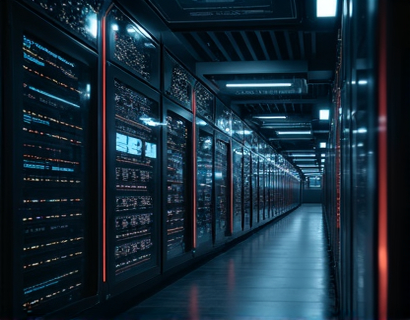Revolutionizing Aquaculture Businesses: The Power of Advanced Software Solutions
In the rapidly evolving world of aquaculture, business owners and managers face numerous challenges that can impact the success and sustainability of their operations. From managing complex logistics and resource allocation to ensuring compliance with regulatory standards, the demands are substantial. However, with the advent of advanced software solutions, aquaculture businesses can streamline their operations, boost productivity, and optimize resource management. This article delves into the transformative impact of these software tools, providing essential insights for owners and managers looking to thrive in a competitive market.
Understanding the Importance of Software in Aquaculture
The aquaculture industry has seen significant growth over the past few decades, driven by increasing global demand for seafood. As the industry expands, the need for efficient and effective management tools becomes paramount. Software solutions designed specifically for aquaculture businesses offer a comprehensive approach to managing various aspects of the operation, from hatchery management to harvest and distribution. These tools not only enhance productivity but also ensure that businesses operate within regulatory frameworks and environmental guidelines.
Key Features of Advanced Aquaculture Software
Advanced aquaculture software solutions come packed with features that address the unique needs of the industry. Some of the most critical functionalities include:
- Real-time data monitoring and analysis
- Automated reporting and compliance tracking
- Inventory and asset management
- Supply chain optimization
- Integration with IoT devices for enhanced monitoring
- Financial management and budgeting tools
These features collectively contribute to a more streamlined and efficient operation, allowing aquaculture businesses to focus on growth and innovation.
Streamlining Operations with Advanced Software
One of the primary benefits of implementing advanced software in aquaculture is the significant reduction in operational complexity. Traditional methods often involve manual data entry, which is time-consuming and prone to errors. Advanced software automates these processes, ensuring accurate and timely data collection and analysis. For instance, real-time data monitoring allows managers to track water quality parameters, feed consumption, and fish health metrics continuously. This immediate access to critical information enables prompt decision-making and proactive management, reducing the risk of issues escalating into major problems.
Moreover, automated reporting and compliance tracking features ensure that businesses stay within regulatory requirements. These tools generate reports on key performance indicators, environmental impact, and safety standards, making it easier to demonstrate compliance during inspections. This not only saves time but also reduces the administrative burden on staff, allowing them to focus on core business activities.
Boosting Productivity Through Optimized Resource Management
Resource management is a critical aspect of aquaculture operations, and advanced software solutions offer powerful tools to optimize the use of resources. Inventory and asset management modules help businesses keep track of equipment, feed, and other supplies, ensuring that nothing goes to waste. By maintaining an accurate inventory, aquaculture operations can reduce costs associated with overstocking or stockouts, thereby improving overall efficiency.
Supply chain optimization is another area where software shines. By integrating with suppliers and distributors, aquaculture businesses can streamline the flow of goods and services, reducing lead times and minimizing delays. This integration also provides visibility into the entire supply chain, enabling better planning and coordination. For example, software can predict demand based on historical data and market trends, allowing businesses to adjust their production schedules accordingly.
Enhancing Financial Management and Budgeting
Financial management is crucial for the sustainability of any business, and aquaculture is no exception. Advanced software solutions offer robust financial management and budgeting tools that help businesses maintain control over their finances. These tools facilitate accurate accounting, cash flow management, and budget planning. By automating financial processes, businesses can reduce the risk of errors and ensure that financial data is up-to-date and reliable.
Budgeting tools allow managers to allocate resources effectively, prioritize investments, and monitor expenses in real-time. This level of visibility helps in identifying cost-saving opportunities and making informed financial decisions. For instance, software can highlight areas where costs are higher than expected, prompting managers to investigate and implement corrective measures.
Integration with IoT for Enhanced Monitoring
The integration of Internet of Things (IoT) devices with aquaculture software takes resource monitoring to the next level. IoT sensors can be deployed throughout the aquaculture facility to collect data on various parameters such as water temperature, pH levels, dissolved oxygen, and more. This data is then transmitted to the software platform in real-time, providing a comprehensive overview of the operation's status.
IoT integration enables continuous monitoring, allowing for early detection of potential issues before they become critical. For example, a sudden drop in dissolved oxygen levels can be immediately flagged, enabling swift action to maintain optimal conditions for fish health. This proactive approach not only enhances the well-being of the aquatic life but also prevents losses due to disease outbreaks or environmental stress.
Case Studies: Success Stories in Aquaculture Software Implementation
To better understand the impact of advanced software solutions in aquaculture, let's look at a few success stories:
One notable example is a large-scale salmon farming operation that implemented a comprehensive software system to manage its entire supply chain. The software integrated data from hatcheries, farms, and processing facilities, providing end-to-end visibility. As a result, the operation saw a 20% reduction in production costs and a 15% increase in output. The real-time data monitoring and automated reporting features allowed managers to make data-driven decisions, optimizing every aspect of the business.
Another case involves a group of small-scale shrimp farmers who adopted an inventory management software solution. Prior to implementation, they struggled with tracking their feed and equipment inventory, leading to frequent stockouts and waste. The software provided a centralized platform to manage inventory, resulting in a 30% reduction in waste and a 25% decrease in inventory holding costs. Farmers reported improved cash flow and the ability to expand their operations without the constraints of resource management.
Challenges and Considerations in Implementing Aquaculture Software
While the benefits of advanced software solutions are clear, there are several challenges and considerations that aquaculture businesses should be aware of when implementing these tools:
- Cost: High-quality software solutions can be expensive, especially for small-scale operations. However, the long-term benefits often outweigh the initial investment.
- Training: Staff may require training to effectively use the new software. Providing comprehensive training programs can help ensure a smooth transition.
- Data Security: With increased data collection and storage, ensuring the security and privacy of sensitive information is crucial. Businesses should choose software providers with robust security measures in place.
- Customization: Each aquaculture operation is unique, and software should be customizable to meet specific needs. Working closely with software providers to tailor solutions is essential.
By addressing these challenges proactively, businesses can maximize the benefits of advanced software solutions and drive their operations towards greater efficiency and success.
Conclusion: Embracing the Future of Aquaculture Management
In conclusion, advanced software solutions are revolutionizing the aquaculture industry by streamlining operations, boosting productivity, and optimizing resource management. These tools provide essential functionalities that help businesses navigate the complexities of modern aquaculture, from real-time data monitoring to financial management and IoT integration. While there are challenges to consider, the long-term benefits make the investment well worth it. As the industry continues to grow, embracing these technological advancements will be key to staying competitive and sustainable in the global seafood market.










































